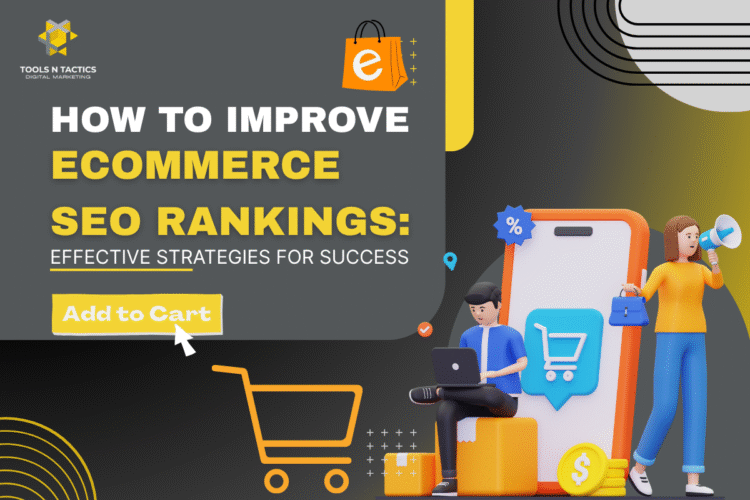

When was the last time you really looked at your website? Not just a quick look, but a full analysis with SEO in mind? It’s probably been a while since you last did it, like most business owners or marketers. That’s okay. The problem is that in today’s search-driven world, you must understand how to look at a website if you want to remain visible, competitive, and relevant.
Maybe your site looks polished. It loads decently fast. You’re even publishing content regularly. But if you’re not digging into what’s working (or not), you’re flying blind. SEO isn’t something you “set and forget”. It needs attention—measured, consistent, insightful attention. And that starts with understanding what to look for.
This guide will show you the most important tools and methods for properly analyzing your website for SEO. This article is meant to help you whether you want to get higher in search results, fix hidden technical problems, or just figure out why your traffic dropped last month. We’ll go over it step by step, without using too much jargon or fluff. We’ll give you real, useful information about what makes a site rank, work, and convert.
Let’s get into it.
Why You Should Analyse a Website for SEO Success
One of the best ways to improve your online presence—or, to be honest, just maintain it current—is to learn how to search engine optimize your website. Reports and checking boxes are not the only things it involves. It involves comprehending the reasons behind your site’s overall performance, traffic, and rankings.
Consider your web page to be a machine. Things fail unexpectedly, performance deteriorates, and parts wear down without routine examination. An SEO analysis is what that inspection is. What is working well, what isn’t, and what is quietly sabotaging your efforts in the background are all revealed by it.
Here’s why it matters:
- Search engines evolve constantly. What worked last year might be outdated today. Algorithms shift, ranking signals change, and staying static means falling behind.
- Your competitors aren’t sitting still. They’re optimizing, experimenting, and targeting your audience. Analysing your site helps you spot where they’re gaining ground—and where you can push back.
- Traffic doesn’t equal conversions. You could have thousands of visitors a month and still struggle to see results. SEO analysis helps identify not just how people find your site, but what they do once they’re there.
- Small issues compound over time. Broken links, slow-loading pages, outdated content—individually, they seem minor. But together? They damage your authority and tank your rankings.
You might adopt a proactive rather than a reactive strategy by routinely analyzing your website. You’ll find lost chances, fix unnoticed issues, and improve your approach using facts rather than conjecture. And those little realizations build up to major victories over time.
Therefore, this is where actual progress starts, whether you’re auditing for technical SEO, improving your keyword strategy, or ensuring that your content is in line with search intent.
Understanding SEO Basics Before You Analyse a Website


A firm understanding of SEO principles is essential before delving into the tools and methods for website analysis. In the absence of such basis, even the most thorough audits may seem burdensome, or worse, they may cause you to make inaccurate adjustments. Let us take a moment to review the definition of SEO, its operation, and the reasons for its significance.
What Is Search Engine Optimization
Search Engine Optimization, or SEO, is more than simply a fad or a temporary solution. It’s the continuous process of improving your website to raise its ranking on search engines like Google, Bing, or even YouTube (yes, YouTube is a search engine).
Optimizing your website for SEO essentially makes it more visible to those who are actively looking for what you have to offer. Whether your content is a product, service, or just useful information, the actual action occurs when it appears on page one, ideally in the top three.
And here’s why it matters: Most people don’t scroll. If your site isn’t ranking well, you’re invisible to potential customers. No clicks. No traffic. No growth. SEO helps solve that.
Key SEO Terms You Need to Know
You don’t need to be an expert, but knowing a few essential terms will make your website analysis a lot smoother:
- Keywords – These are the exact phrases people type into search engines. Think of them as the bridge between what users want and the content you offer.
- On-Page SEO – This covers everything on your website—like title tags, meta descriptions, headings, content quality, internal links, and images.
- Off-Page SEO – Factors outside your site that affect your rankings, like backlinks from other websites, social signals, and brand mentions.
- Technical SEO – This deals with how well your site is structured for search engines—site speed, mobile-friendliness, security, crawlability, and more.
- SERP – Stands for Search Engine Results Page. It’s the list of websites that appears when you search something. Your goal? Be as close to the top as possible.
Understanding these concepts makes it easier to diagnose issues and know what to fix.
The Role of Organic Traffic and Visibility
Organic traffic refers to visitors that come to your site through unpaid search results. This form of traffic is vital as it represents engaged users actively seeking information, products, or services you offer.
High visibility in SERPs increases the likelihood of attracting more organic traffic. Enhanced visibility can lead to higher click-through rates (CTR) and, ultimately, better conversion rates. Investing in SEO not only improves your ranking but also establishes your brand’s credibility and authority in your niche, driving sustained growth.
Preparing for a Website SEO Analysis
Diving into SEO without preparation? Launching a marketing campaign while blindfolded is analogous to that. You might strike something, of course, but it’s unlikely to be what you were going for.
Spend some time setting the scene before you analyze a website. In addition to saving time, a well-planned strategy produces more insightful conclusions and more astute decisions. Here’s how to properly lay a foundation.
Defining SEO Goals and Objectives
The first question in any intelligent analysis is: What are your true goals?
Increasing organic traffic to your blog or service pages may be your goal. Reducing the bounce rate on your most popular landing page or improving your rankings for a new set of target keywords may be your goals. Your main objective may also be to increase conversions, whether they be purchases, downloads, calls, or form submissions. Finding out why your rankings have stagnated or dropped might sometimes be the goal.
Your goal ought to be clear, measurable, and directly tied to the goals of your business. Data on visitor behavior, such as average stay on site and bounce rate, organic visitor conversion rates, keyword placements in pertinent phrases, and monthly organic traffic sessions are a few examples. Before you examine a website, you may set up these indicators to monitor the effectiveness of your SEO changes.
Gathering Essential SEO Tools
You don’t need to use every tool available to analyze a website correctly. Build a solid toolbox instead, offering a variety of data kinds, from competition comparisons and keyword trends to technical insights and user behavior.
Learn more about crawl issues, indexing errors, and keyword performance by starting with Google Search Console. You may learn more about how people interact with your website and where they could be visiting via Google Analytics. Tools like as Ahrefs, SEMrush, or Moz may provide you more precise information on keyword gaps, backlinks, and competition benchmarking. Ubersuggest also offers a free starting point for customers on a restricted budget, complete with domain-level information and keyword recommendations.
You don’t need to use them all—just enough to get a full picture of how your site is performing and where the problems (or opportunities) lie.
Setting Up Google Analytics and Performance Tracking
It’s nearly impossible to run a meaningful SEO analysis without data, so make sure your tracking systems are active and accurate before you begin.
Google Analytics should be your first choice. Make sure you have set up key goals, like tracking purchases, form submissions, or newsletter sign-ups, and that it is loaded properly on every page of your website. Next, make sure your website is connected to Google Search Console. This will notify you of indexing problems, keyword searches, and search visibility in general. Make sure every domain or subdomain you oversee is properly setup and validated.
Lastly, Take into consideration utilizing Looker Studio (previously Google Data Studio) to streamline the reporting process. Using this free tool, you can create dashboards that are customisable and extract data from your SEO tools in real time. Having everything shown in one location makes it much easier to monitor components like traffic sources, behavior flow, and conversion targets.
Getting organized before you analyse a website might not feel exciting, but it’s the smartest move you can make. The clearer your starting point, the more precise—and profitable—your SEO decisions will be down the road.
Assessing On-Page SEO Factors


On-page SEO is one of the most important aspects of any SEO audit, so after your objectives are established and your resources are ready, it’s time to get your hands dirty. Everything that is on your website, including your text, keywords, HTML components, internal links, and even your photographs, should be examined here.
On-page SEO is about control, and off-page SEO is about reputation. This area is yours. Additionally, how you organize it may either make your material easier for Google to interpret or completely confound it.
Let’s go over things to consider when analyzing the on-page SEO of a website.
Website Content Quality and Relevance
Good content is essential to successful SEO. Make sure the information on your website is pertinent to your specialty and answers the queries and wants of your audience. As these components might increase trust, this also entails creating thorough product descriptions and adding client testimonials.
Make sure your blog entries, landing pages, and articles are interesting. In addition to providing readers with information, your material should enthrall them and entice them to stay on your website longer. Because search engines like active websites, update your material frequently to keep it current and relevant.
Keyword Research and Placement
Start with an extensive keyword research to identify the words and phrases that your intended audience uses. Keyword research tools can help you find relevant phrases that complement your content goals. Keep in mind that writing with too many keywords might degrade your SEO. Try writing with a balanced keyword density instead.
Among other important places, include the main keywords in the page title, headers, and body of the text. Use long-tail keywords and their variants as naturally as possible in your text. Take the article’s readability and consistency into account when you add keywords.
Optimizing Metadata and HTML Elements
Metadata optimization is essential for on-page SEO. This includes making use of strong title tags and captivating meta descriptions. Users should be enticed to click through from search results by your meta descriptions, which should appropriately summarize the content.
Since main keywords are essential for search engine results, make sure your title tags are brief and contain them. Additionally, pay attention to other HTML components that support SEO, such meta tags and picture captions. Implementing metadata correctly may greatly increase the visibility of your website and draw in high-quality visitors.
Utilizing Header Tags and Alt Text
Both search engines and consumers can better comprehend the hierarchy of information when header tags are used to assist structure your content. Use H1/H3 tags for subheadings and H1 tags for key titles to create a clean layout. This company helps with SEO and enhances user experience.
Don’t undervalue the significance of alt text for pictures. You should give each image on your website a detailed alt text description. This technique improves accessibility for those with visual impairments and gives search engines information about your photos, which strengthens your entire SEO approach.
Analyzing Technical SEO and Website Structure
Even if your meta tags are perfectly optimized, your content is excellent, and your keywords are carefully chosen, it won’t matter if your website is slow, broken, or hard to use. Technical SEO is useful in this situation. Technical SEO is the engine room of your site’s performance, often disregarded since it works in the background. It may subtly decide whether you rank or stay invisible.
Analyzing a website’s technical performance and health is not just a smart idea, but it is a must.
Site Speed and Performance Optimization
Users anticipate speedy website loads. If your site takes more than a few seconds to load, Google has noticed that many visitors will depart before they have ever viewed your content. In addition to being an essential aspect of user experience, page speed is also a verified ranking factor in Google’s algorithm.
Evaluate the performance of your website using tools like Google PageSpeed Insights, GTmetrix, or Lighthouse (a component of Chrome DevTools). Unminified CSS or JavaScript files, huge, uncompressed pictures, and an excessive amount of third-party scripts cause frequent problems with these platforms. You can possibly be being held back by slow server response times.
Once the offenders have been found, take any necessary immediate action. Use a content delivery network (CDN), enable browser caching, compress and resize pictures (WebP is an excellent format for this), and minimize the quantity of HTTP requests made each page. You can enhance engagement and drastically reduce bounce rates by even cutting down on your load time by half a second.
Mobile-Friendliness and User Experience
Now that over half of all online traffic comes from mobile devices, your mobile site is no longer optional; in Google’s view, it is your main website. Your site’s mobile version is crawled, assessed, and ranked because of mobile-first indexing.
Start by using Google’s Mobile-Friendly Test to test your website, and then use your own smartphone to browse it and see how it works. Check if the layout is responsive as you walk through it. Think about if buttons and links are easy to click, whether material can be viewed without zooming in, and whether pop-ups or sticky headers hinder the user experience.
Not only is a completely mobile-optimized website responsive, but it is also speedy, easy to use, and portable.
Crawling, Indexing, and Canonical URLs
Bots are used by search engines to scan and index your website, therefore it’s critical that they can navigate your material with ease. You’re putting yourself at risk for low exposure if key pages are unavailable or if duplicate content confuses search engines.
Start using Google Search Console to identify crawl errors, indexing issues, or excluded pages instead. Verify that your XML sitemap is legitimate, current, and added to Google. You should check your robots.txt file to make sure that no important pages are inadvertently blacklisted. Additionally, ensure that canonical tags are used effectively to prevent problems with material duplication.
You can also run a quick diagnostic by searching “site:yourdomain.com” in Google. This shows which of your pages are currently indexed. You might need to alter meta directives, remove unnecessary URLs, or clean up and resubmit your sitemap if important sites are missing or if low-value or irrelevant pages show up.
Internal Linking and Navigation
The strength of internal linkage is greater than it may appear. It directs people to pertinent material and gives authority to important pages, in addition to assisting Google in comprehending the hierarchy and structure of your website. Both user experience and SEO results are improved by a robust internal linking structure.
Take a hard look at the way you connect the pages. Are links used organically throughout your writing, forming useful connections between related subjects? Are you use detailed, relevant anchor language rather than cliches like “click here”? Search engines can be ignoring pages that aren’t linked from anyplace on the website, so look for any orphaned pages.
Checking your website for broken links is also a smart idea because they lead to dead ends and irritate crawlers and people alike. Your most crucial pages should be only a few clicks away from the homepage thanks to a rationally organized navigation menu with a distinct hierarchy.
Your greatest content will be discoverable, link equity will be allocated sensibly, and visitors will be enticed to explore deeper if your internal structure is well-designed.
Evaluating Off-Page SEO and Link Building
Evaluating off-page SEO involves analyzing elements beyond your website that influence your search rankings. Effective link building is essential to boosting your site’s credibility and traffic, impacting how search engines perceive your site.
Analyzing Backlink Profile
A strong backlink profile contributes significantly to your off-page SEO. Begin by assessing the quantity and quality of your backlinks. Tools like Google Search Console and third-party applications can help you identify referring domains and anchor texts. Focus on obtaining links from authoritative sites relevant to your industry.
Backlinks from high-quality sources can improve your site’s credibility. Monitor your link profile regularly to remove any toxic links that might harm your SEO performance. Regular analysis ensures you maintain a healthy backlink profile, which is crucial for ranking improvements.
Assessing Inbound and External Links
Understanding both inbound and external links can provide insights into your site’s performance. Inbound links, or backlinks, play a critical role in your site’s authority. Evaluate their quality, as links from high-authority sites carry more weight in search engines.
External links, or links pointing to other sites from your pages, also affect SEO. They can establish credibility and context for your content. Be strategic in your external linking; link to authoritative and relevant sources that enhance the user experience.
Understanding Competitive Analysis and SERP Rankings
Conducting competitive analysis is key to understanding your position in search rankings. Analyze your competitors’ backlink profiles, keywords, and content strategies. This analysis can highlight gaps in your strategy that you can exploit for better performance.
Use tools like SEMrush or Ahrefs to gather information on competitors. Investigate their SERP rankings to see which keywords deliver the most traffic. This will help you identify opportunities for your site by targeting similar keywords and enhancing your link-building strategies. By staying informed about your competition, you can adjust your approach effectively to improve visibility.
Measuring SEO Performance and Growth
To effectively measure SEO performance and growth, you need to focus on specific metrics that highlight how well your website is doing. Key areas include tracking keyword rankings, web traffic, conversions, and user engagement, along with staying informed about the latest SEO trends and tactics.
Tracking Keyword Rankings and Web Traffic
Monitoring keyword rankings is essential for understanding your website’s visibility. Tools like Google Search Console and SEMrush can help you track which keywords are driving traffic to your site.
You should also analyze web traffic metrics, such as unique visitors and page views. High traffic volumes indicate that your content is resonating, while low numbers may signal a need for adjustments. Using tools like Google Analytics, you can gain insights into visitor behavior, allowing you to refine your content marketing strategies.
Monitoring Conversions and User Engagement
Evaluating conversions is crucial for assessing your site’s effectiveness. This includes tracking actions like purchases, sign-ups, or contact form submissions. High conversion rates often correlate with effective SEO and content strategies.
User engagement metrics, such as bounce rates and average session duration, provide additional context. According to analytics, a low bounce rate suggests visitors find your content relevant. Engaging users can also enhance brand awareness and loyalty, making it vital to improve these metrics continuously.
Staying Updated With SEO Trends and Tactics
The SEO landscape is ever-evolving, making it important to stay informed about trends and tactics. Subscribe to reputable SEO blogs like Moz and Search Engine Land.
Regularly conduct keyword research to discover the latest terms your audience is searching for. This can guide your content creation efforts, ensuring you remain relevant and competitive. Pay attention to algorithm updates from search engines, as these can impact your rankings significantly. Staying proactive helps you adapt your approach, boosting your site’s visibility and performance over time.
Ready to Analyse Your Website Like a Pro?
If all this feels like a lot to unpack—or if you’re not sure where to begin—we’ve got your back. At Tools N Tactics, we help businesses like yours uncover hidden SEO opportunities, fix what’s holding you back, and build a strategy that actually delivers results.
Book a free website audit today and let’s turn your site into your strongest marketing asset.
No pressure. Just insight.
Frequently Asked Questions
In this section, you will find answers to common questions about analyzing a website for SEO. These FAQs cover tools, processes, and resources that can significantly enhance your SEO analysis and performance.
What tools can I use to conduct an SEO analysis of a website?
You can utilize various tools for SEO analysis, including Google Analytics, Ahrefs, SEMrush, and Moz. These platforms offer insights on traffic, backlinks, and keyword rankings, providing a comprehensive view of a site’s SEO health.
How can Google Analytics be used to improve a website’s SEO?
Google Analytics helps you track user behavior on your site. You can analyze metrics like bounce rates, session durations, and conversion rates to identify areas for improvement, thus enhancing your site’s SEO strategy effectively.
What steps should be taken to perform a comprehensive SEO website audit?
To conduct a thorough SEO audit, start by evaluating the website’s structure, content quality, and keyword optimization. Check for technical issues, backlinks quality, and user experience factors. Addressing these components can significantly improve search visibility.
Can you analyze SEO performance without paid tools, and how?
Yes, you can analyze SEO performance using free tools. Google Search Console provides insights into keyword rankings and site performance. You can also use free versions of tools like Ubersuggest or Screaming Frog for basic analysis.
How do you check a website’s search engine ranking for various keywords?
You can check keyword rankings using tools like Google Search Console and third-party SEO platforms. These tools will show you where your site ranks for specific keywords, helping you adjust your strategy accordingly.
How can Google Search Console help in identifying SEO opportunities for a website?
Google Search Console enables you to monitor your site’s performance in SERPs. It offers data on impressions, clicks, and average positions for keywords, helping you discover new optimization opportunities to enhance your SEO.




